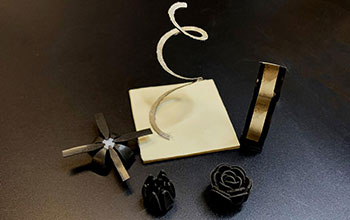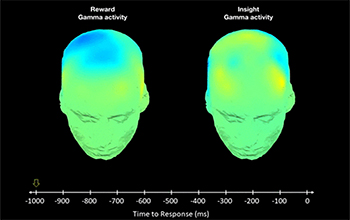
Research News
Material combines strengths of individual components for a single system capable of rapid shape changes
December 19, 2019
A team of researchers from the Georgia Institute of Technology and The Ohio State University has developed a material called magnetic shape memory polymer that uses magnetic fields to transform into a variety of shapes. NSF supported the research through its Materials Research Science and Engineering Centers with an award to Ohio State.
The material is a mixture of two types of magnetic particles: one for inductive heat, and one with strong magnetic attraction and shape-memory polymers to help lock various shape changes into place.
To make the material, the researchers distributed particles of neodymium iron boron and iron oxide into a mixture of shape memory polymers that, once fully incorporated, was molded into various objects designed to evaluate how the material performed in a series of applications.
For example, the team made a gripper claw from a t-shaped mold. Applying a high-frequency, oscillating magnetic field to the object caused the iron oxide particles to heat up through induction and warm the entire gripper. That temperature rise, in turn, caused the shape memory polymer matrix to soften and become pliable.
A second magnetic field was then applied to the gripper, causing its claws to open and close. Once the shape memory polymers cooled back down, they remained locked in that position. The strength of the material at its locked state allowed the gripper to lift objects up to 1,000 times its own weight.
The material could enable a range of new applications from gripper arms for delicate or heavy objects to antennas that change frequencies on the fly.
Dan Finotello, a program director in NSF’s Mathematical and Physical Sciences Directorate adds, “This polymer integrates fast reversible and reprogrammable actuation, shape locking and untethered operation for applications in soft robotics, morphing structures, and deformable electronics, especially for designing active and adaptive guidewires, catheters and stents that could potentially enable the next generation of biomedical devices for minimally invasive operations. It is a beautiful example of interdisciplinary research characterizing NSF’s Materials Research Science and Engineering Centers program.”
The research was reported in the journal Advanced Materials.
—
NSF Public Affairs,
(703) 292-7090 media@nsf.gov
Source: NSF News
Brought to you by China News







